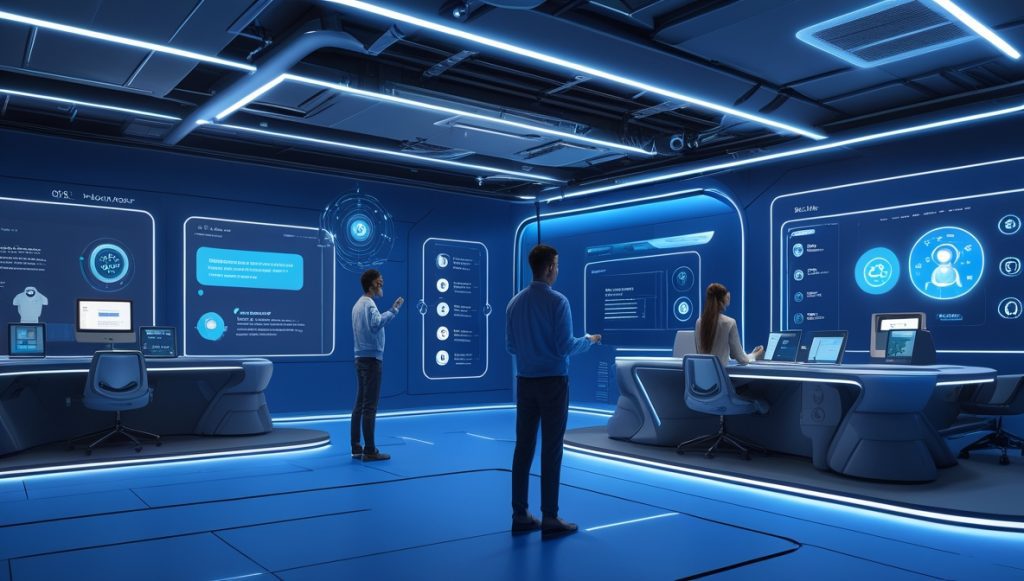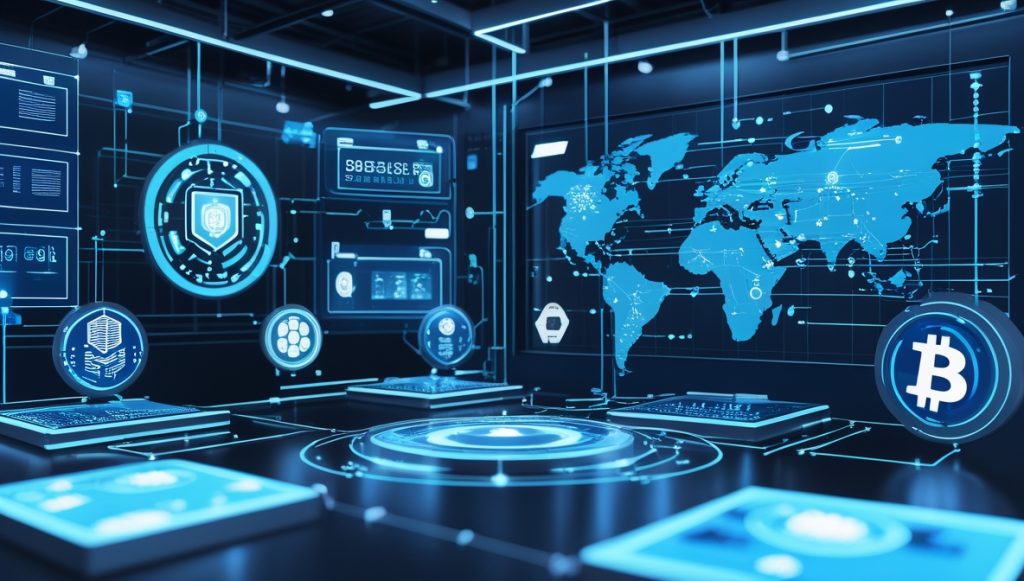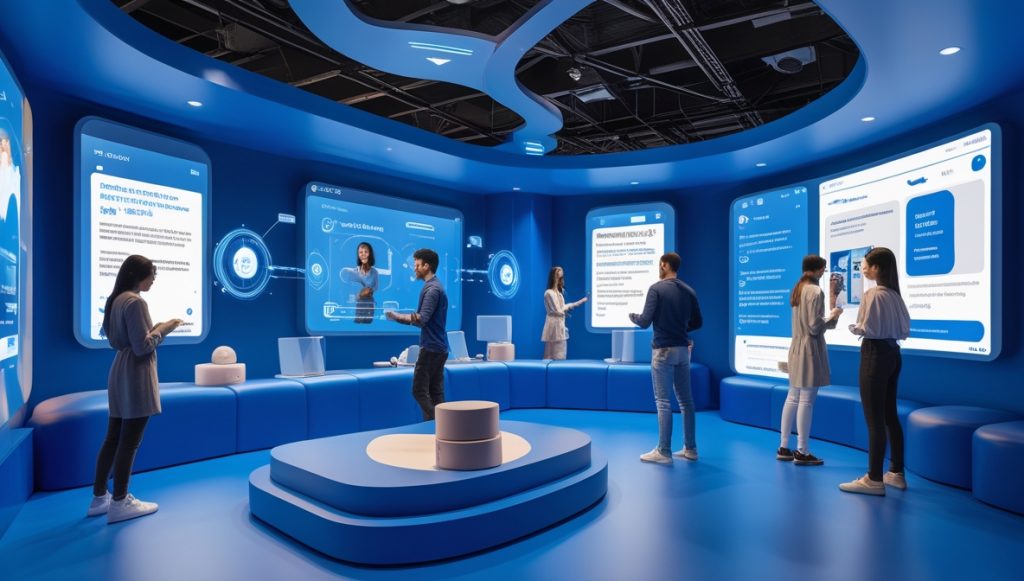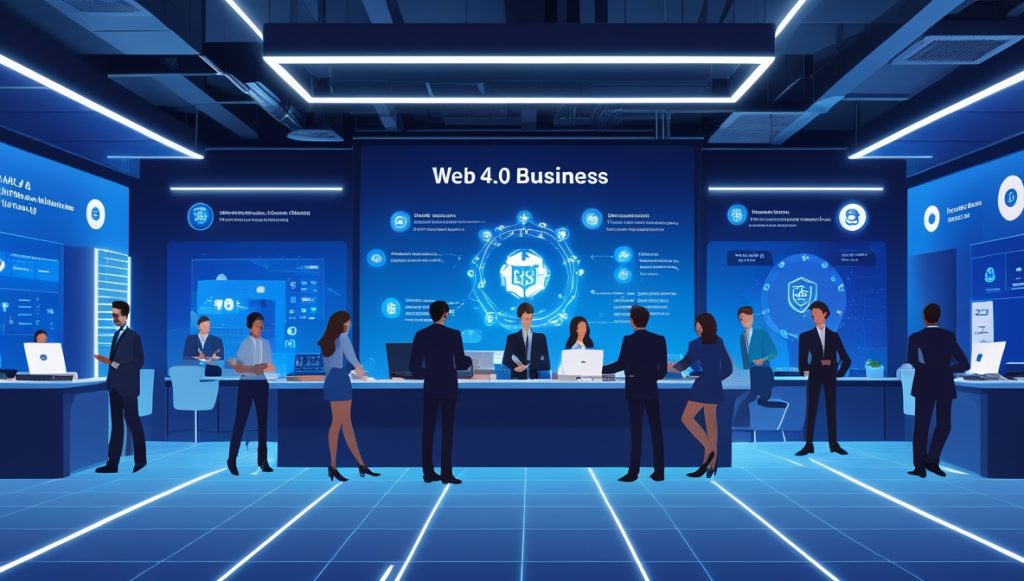The expansion of the web exceeds all initial expectations for its pace of growth. We have witnessed enormous web evolution that started with static pages then proceeded to smart experiences. Now, the spotlight turns to Web 4.0, a new stage that’s expected to completely reshape how we interact with websites and applications. Web 4.0 brings more than enhancement through visual improvements or incremental improvements of interfaces because it represents a web that will display artificial intelligence while providing customization options and comprehensive linked digital environments. The upcoming developments in web technology will transform web development practices according to future predictions.
The Foundation of Web 4.0: From Automation to Intelligence

Web 4.0 represents the next evolutionary leap in the digital landscape, moving beyond the current Web 3.0’s decentralization and data-driven focus. At its core, Web 4.0 is defined by a seamless integration of automation and artificial intelligence (AI), which will revolutionize how users interact with digital content and services. The establishment of this new web platform centers on automation features which produce systems that learn from user activities to become smarter while meeting their needs. This transformation leads traditional web interaction beyond simplicity because computers now perform intelligent applications of tasks autonomously with minimal human supervision.
The foundation of Web 4.0 also paves the way for AI-powered systems to drive personalized experiences at an unprecedented scale. Data processing capabilities of AI in Web 4.0 exceed past web iteration capabilities through which it will optimize user interfaces and content delivery to create adaptive superior environments. By fostering a deeper understanding of human behavior and preferences, Web 4.0 promises a future where digital interactions are not only faster and more efficient but also more meaningful and customized to individual needs.
Smarter Systems Built on Context
One of the biggest shifts we’re expecting in Web 4.0 is the rise of context-aware systems. Unlike current apps that respond only to direct input, Web 4.0 platforms will analyze user behavior, preferences, and even surroundings to deliver content or features before the user even asks. These systems demand more than data storage because they will gain the capability to grasp its meaning. The transition from automated systems leads to intelligent real-time interfaces being the main modification. The future project management tool will modify its notification settings based on user work hours while the online shopping interface will automatically redesign itself using consumer purchase history information.
Web applications at this level will become possible due to combined technologies which include artificial intelligence, machine learning and big data analytics. Despite their current fashion status as buzzwords they represent the essential forces which enable upcoming web applications to execute self-directed smarter choices. In Web 4.0, intelligence won’t be optional. It’ll be a core function.
Web Apps That Anticipate Instead of React
Through earlier web versions user experience primarily depended on the combination of fluid navigation together with simple interface interactions. In Web 4.0, user experience will mean apps that act before users even do. The system will transform predictive text and personalized dashboards into hyper-personalized user environments that understand user needs by applying context analysis and detecting emotional states and historical usage patterns.
Take healthcare platforms, for instance. A Web 4.0-driven medical dashboard might analyze your wearables, understand your daily activity, and recommend tailored wellness content without requiring manual input. The upcoming smart seamless experience will lead users toward this direction.
AI-Powered Data Flow and Personalization
With Web 4.0, personalization will reach new heights. The current user experience personalization mostly depends on cookies along with basic user data. Human behavior patterns alongside emotional indicators and voice intonation will become critical inputs for the following generation of web technologies. The central role of AI will be data sorting to deliver natural human-like interactions instead of robotic ones.
Your clicks and excessive view time as well as your hesitation with products will all communicate valuable data. The digital data obtained by web applications transforms into automatic interface modifications such as layout alterations and offer tweaks while potentially involving interface redesigns during real-time operations.
Core Technologies Driving the Web 4.0 Movement

The Web 4.0 movement is underpinned by a range of core technologies that work together to create a smarter, more connected digital ecosystem. At the heart of this transformation are artificial intelligence, machine learning, and blockchain—technologies that provide the backbone for Web 4.0’s advanced functionalities. Through AI and machine learning systems gain the ability to handle vast datasets to generate real-time decisions which enable extremely personalized efficient user interfaces. Digital platforms using these technologies can predict user choices to show individualized content or services which surpass the previous limits of possible customization.
Alongside AI, blockchain technology is helping to shape Web 4.0 by enhancing security and decentralization. Digital transactions combined with interactions become trustworthy through blockchain technology because it stores and verifies data securely in an unalterable and open manner that does not require third-party verification. Digital trust has emerged as a new era that enables users to gain better authority over their data and digital activities across the internet. The integration of these technologies with others, such as edge computing and 5G, will accelerate Web 4.0’s development, allowing for faster, more efficient data processing and the delivery of real-time, highly responsive services.
The AI and Machine Learning Integrations
Development tools will no longer support AI as an alternative option because AI will fully integrate into each development platform. With Web 4.0, developers will rely on machine learning models to automate user journeys, suggest changes in UI in real-time, or deliver content dynamically. Websites need to update their dataset models through continuous training and feedback systems for enhancing model accuracy and end-user engagement. Enterprise-level platforms represent only one category of systems that will gain access to these tools. Personal and organizational web applications will gain AI components that low-code and no-code builders will integrate through easy plug-and-play frameworks.
The Role of Edge Computing and Real-Time Processing
Speed and latency have always mattered in web performance, but Web 4.0 will push these requirements even further. Traditional cloud computing systems risk becoming performance bottlenecks due to demands for live decisions and individualized output delivery. The processing requirements of Edge computing enable solutions to be located near the user. Edge technology can support faster data access and offline functionality, both of which are essential for Web 4.0. Edge systems serve as essential components for enabling real-time modifications of shopping application catalogs and personalized quiz customization in learning apps.
Interconnected APIs and Open Ecosystems
Web 4.0 won’t exist in isolation. APIs that are open to developers and interconnected ecosystems as well as platform integrations will establish the new territory. Each application must integrate communication functionality with CRM platforms as well as IoT devices and data dashboards and further systems. The standardized features of API interfaces and tools combined with improved scalability will enable easier connection between digital systems. The main objective is to break free from closed-off systems. In Web 4.0, everything will be part of a shared digital infrastructure that encourages collaboration between apps, services, and even users.
How Web 4.0 Will Change User Experience Forever

Web 4.0 is set to completely redefine the user experience by introducing a level of sophistication that moves beyond anything currently offered by Web 3.0. Unlike previous versions of the web, which required users to actively search for and engage with content, Web 4.0 will provide highly intuitive, seamless interactions that adapt to individual preferences. Thanks to AI and machine learning, Web 4.0 will predict users’ needs before they even have to ask, delivering personalized content, services, and recommendations in real time. The web platform demonstrates natural adaptability like a system that appears to interpret your mental processes because it learns from your actions.
Additionally, the integration of advanced virtual and augmented reality technologies into Web 4.0 will blur the lines between the digital and physical worlds, creating immersive environments where users can interact with content in ways that were once reserved for science fiction. With such immersive technologies, Web 4.0 promises to offer richer, more interactive, and more engaging user experiences, whether it’s for entertainment, education, or commerce. A decentralized approach to identity management combined with upgraded security protocols provides users peace of mind while using these platforms since their data remains protected at every interaction.
Visual Interfaces Will Feel Less Like Interfaces
Design is headed toward invisibility. The interface of a Web 4.0 app won’t demand your attention—it’ll quietly adapt in the background. Users will move between voice commands, gesture-based actions, and touchless input methods. Expect augmented reality layers and interactive 3D objects to become the new standard for user interaction. Web 4.0 will make websites feel less like tools and more like intelligent partners. You won’t have to search for a menu or button—those elements will shift based on your habits and behavior, quietly guiding your actions without drawing attention to themselves.
Hyper-Personalized Experiences for Every User
As we step into Web 4.0, the concept of a “universal interface” might vanish entirely. Different users can view their own version of the same mobile application which adjusts according to their individual browsing characteristics and objectives. The same educational platform used by students and working professionals creates separate experiences because they receive unique navigation structures and distinct color schemes and content order. The customized interfaces beyond looks directly improve user ease of use while simultaneously improving reachability and interaction. The digital interface provides a personalized feeling for each user instead of presenting generic content.
Zero-Click Navigation and Predictive Workflows
Navigating by clicking and typing is approaching obsolescence in the near future. Web 4.0 aims to bring zero-click navigation to the mainstream—where apps guess your needs before you say anything. Your most frequented category will appear automatically upon page load while a travel application displays prices from your frequent destinations. The predictive interface stream reduces time consumption. The user experience in application development and content creation will transform because of this development. The development process needs to account for both content organization and psychological user selection patterns to guarantee unimpeded user navigation.
Web 4.0’s Impact on Business, Developers, and Consumers

The advent of Web 4.0 will have far-reaching effects on businesses, developers, and consumers alike. For businesses, Web 4.0 offers a new way to engage with customers, enhancing personalization and optimizing customer journeys to drive higher conversion rates and loyalty. The integration of AI-driven automation into Web 4.0 allows businesses to reduce operational costs while improving efficiency, as tasks such as customer support, inventory management, and content curation can be handled more effectively by AI-powered systems. Additionally, Web 4.0’s emphasis on decentralization and blockchain will help create more transparent and secure digital marketplaces, benefiting both businesses and consumers by fostering trust and reducing fraud.
For developers, Web 4.0 represents an exciting opportunity to create next-generation applications that leverage the power of AI, blockchain, and other emerging technologies. The demand for highly intelligent, user-centric applications will drive innovation, requiring developers to adopt new tools, languages, and frameworks that can handle the complexities of the Web 4.0 ecosystem. A better personalized experience waits for consumers who will get online content and secure services adapted to their preferences as well as system efficiency. Better protection of consumer privacy and enhanced data security through improved digital identity control systems will reduce concerns about misuse of data. In essence, Web 4.0 is set to usher in a new era where businesses, developers, and consumers all benefit from a smarter, more connected, and more efficient digital ecosystem.
A New Era for Developers and Product Teams
Product teams together with developers must adapt their technical capabilities and work strategies. Web 4.0 brings new frameworks, new APIs, and new ways to architect apps that are smarter and faster. Development teams will allocate their efforts toward analytic work and artificial intelligence training and behavioral design tasks as opposed to traditional layout and styling approaches. Design teams will shift from interface creation to system development of evolving automated solutions that generate outputs through time-based inputs. Web development today focuses on building intelligent functions throughout the system instead of simply creating web pages.
Customers Will Demand Services Which Provide Instant Intelligent Responses
The public will hold tremendous expectations from their user interactions. A Web 4.0 experience that doesn’t feel instantly relevant or responsive will feel outdated. Business organizations need to develop different methods for online customer support. Users will need formatted content which requires straightforward interfaces supported by immediate help. Users now expect immediate solutions from digital tools including instant chatbot resolutions and single-gesture checkout processes because they refuse to experience any kind of digital impediment.
SaaS and Subscription Models Will Transform
Web 4.0 will push the evolution of SaaS platforms as well. The practice of subscription services will evolve toward outcome-based pricing models instead of traditional yearly fees. Price adjustments on digital platforms will become dependent on user activity levels together with the number of tasks that rely on AI completion. The usage-based pricing structure would drive startup companies to concentrate on achieving better results instead of pursuing extensive feature development. Free apps will adopt enhanced user upgrade strategies which transition from time-restricted trials to behavior-based prompts that recognize opportune time for payment.
Summary
Web 4.0 marks a major shift in how web apps will work, feel, and respond to users. Web 4.0 involves building superior functionality alongside human-first encounter design which uses contextual data and consumer behaviors and goals to adapt. AI together with edge computing and deeply connected platforms will make Web 4.0 the most personalized and seamless iteration of the web by offering predictions that adapt to every user. All web stakeholders currently face the advent of a novel digital experience which transforms our expectations regarding web functionality.

